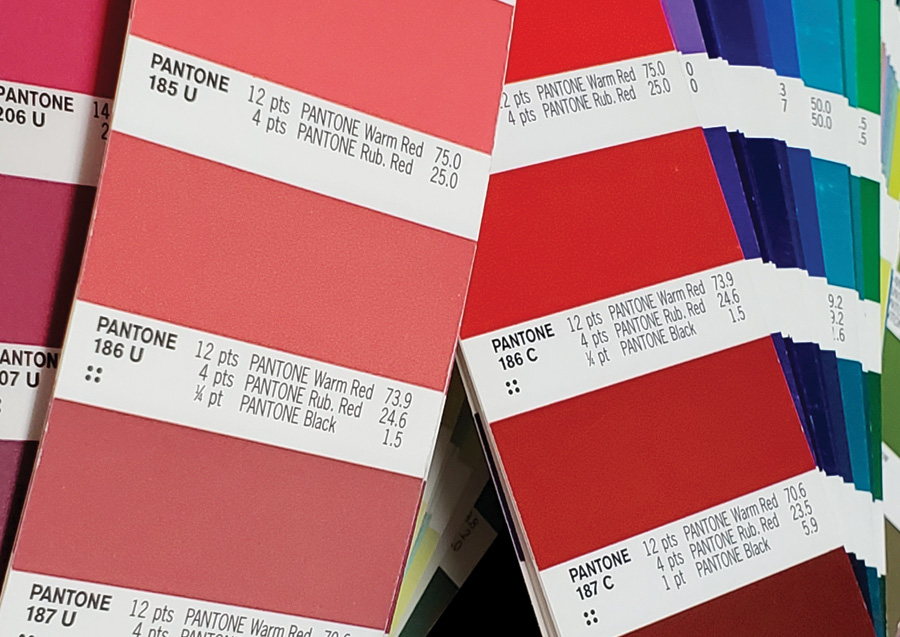Choosing Your Paper
Begin Each Project with Paper in Mind
When designing your print marketing piece, choosing the right paper is just as important as choosing the right typeface. Paper choice can greatly impact your end product and production cost.
When you begin a project, think through the following:
- the final product type: is it a book, poster, flyer, business card, etc.?
- the durability of the piece: how long do you want it to last?
- the writability of the paper: do you need to write on it?
- the feeling of the piece: do you want it to look fancy or inexpensive?
- the design of the piece: will it have large photos or text-heavy content?
- your budget: some paper choices may be more expensive or require special order.
If you are not sure what paper weight or finish is right for your project or if you have questions, our customer service team is happy to talk you through the materials and process.
Choosing the Finish of Your Paper
Coated paper is coated with a surface sealant. This coating gives that paper a smooth, flat surface that doesn't absorb as much ink. The result is sharper printing, especially for images, and a glossier appearance of the inks.
Coated stocks: Ideal for vibrant colors and typically used for brochures, booklets, programs.
- Gloss - gloss coated paper has a high sheen. Gloss papers have less bulk and opacity. Gloss coatings reduce ink absorption, which give the sheet an excellent color definition.
- Dull - a dull finish coated paper is a smooth surface paper that is low in gloss. Dull can also be called satin or silk.
Uncoated stocks: Typically used for handouts, workbooks, booklets, programs or where shine isn't needed or wanted. Uncoated paper has not been coated with surface sealants. It will have a rougher feel to it and will absorb more ink resulting in a more dull appearance to the color. It's a good paper for projects that will be written on such as surveys, reply cards, letterhead and envelopes. It is also best for projects that include a lot of text, like a book. Most colored papers fall into this uncoated category.
Below are a few variations in uncoated paper that we can special order:
- Wove or Smooth - the most common, this has a very smooth surface.
- Laid - laid paper is created with textured lines on its surface.
- Linen - similar to a laid finish, this paper has textured lines on the surface of the sheet, but they are finer and more regular than those that appear on a laid finish stock.
Consider Paper Weight and Thickness
Understanding paper weights can be difficult. The weight of a paper refers to its thickness. It is measured in pounds (ex. 20#) and points (ex. 10 PT). In general, the more a sheet of paper weighs, the thicker it is. A paper's basis weight is calculated by weighing 500 sheets of the paper cut to its basis size.
Take a look at this chart explaining the different weights of paper and their common uses.
| Weight (lightest to heaviest) |
Description |
|---|---|
| 20lb, bond/50lb text (also comes in dull or gloss coated) |
Most often found in your everyday copy machine. |
| 24lb bond/60lb text (also comes in dull or gloss coated) |
Generally multipurpose paper used in the office printer. Also the most popular business letterhead or stationary weight. |
| 28lb bond/70lb text (also comes in dull or gloss coated) |
Perfect weight for brochures and presentations. Excellent for 2-sided printing with minimal show through. |
| 32lb bond/80lb text (also comes in dull or gloss coated) |
Perfect weight for brochures and presentations. Excellent for 2-sided printing with minimal show through, while being slightly heavier than the 28lb. |
| 65lb cover | A sturdy stock with a superb "soft feel" fast drying surface. Great for postcards, menus and posters. |
| 80lb cover (also comes in dull or gloss coated) |
A heavy cardstock, your most conventional business card weight. Available in a wide variety of textures and finishes. This sheet is printed on 80lb cover. |
| 100lb cover (also comes in dull or gloss coated) |
A noticeably heavier cardstock often used for flat cards or invitations. |
